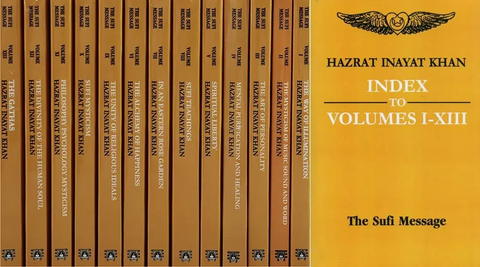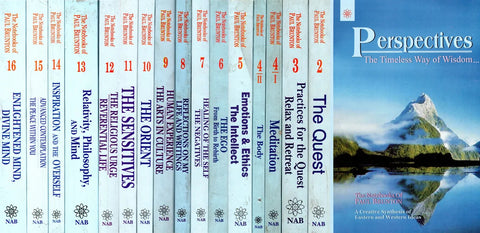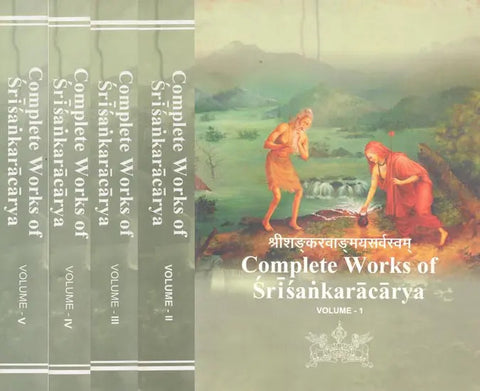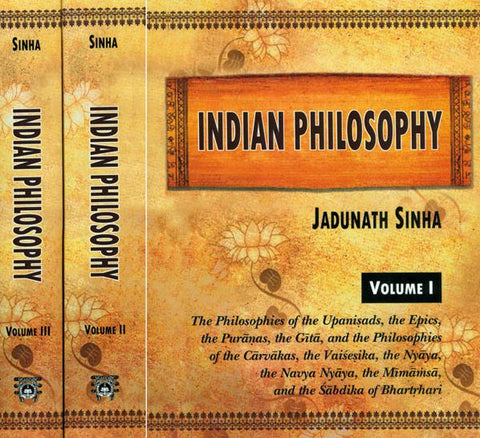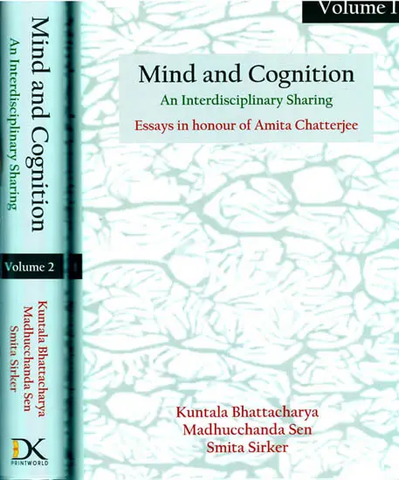Your cart is empty now.
In the four volumes of the works of the Swami Vivekananda which are to compose the present edition, we have what is not only a gospel to the world at large, but also to its own children, the Charter of the Hindu Faith. What Hinduism needed, amidst the general disintegration of the modern era, was a rock where she could lie at anchor, an authoritative utterance in which she might recognise herself. And this was given to her, in these words and writings of the Swami Vivekananda.
For the first time in history, as has been said elsewhere, Hinduism itself forms here the subject of generalisation of a Hindu mind of the highest order. For ages to come the Hindu man who would verify, the Hindu mother who would teach her children, what was the faith of their ancestors will turn to the pages of these books for assurance and light. Long after the English language has disappeared from India, the gift that has here been made, through that language, to the world, will remain and bear its fruit in the East and West alike. What Hinduism had needed, was the organising and consolidating of its own idea. What the world had needed was a faith that had no fear of truth. Both these are found here. Nor could any greater proof have been given of the eternal vigour of the Sanatana Dharma, of the fact that India is as great in the present as ever in the past, than this rise of the individual who, at the critical moment, gathers up and voices the communal consciousness.
That India should have found her own need satisfied only in carrying to the humanity outside her borders the bread of life is what might have been foreseen. Nor did it happen on this occasion for the first time. It was once before in sending out to the sister lands the message of a nation-making faith that India learnt as a whole to understand the greatness of her own thought-a self- unification that gave birth to modem Hinduism itself. Never may we allow it to be forgotten that on Indian soil first was heard the command from a Teacher to His disciples, “Go ye out into all the world, and preach the Gospel to every creature!” It is the same thought, the same impulse of love, taking to itself a new shape, that is uttered by the lips of the Swami Vivekananda, when to a great gathering in the West he says, “If one religion be true, then all the others also must be true. Thus the Hindu faith is yours as much as mine.” And again, in amplification of the same idea: “We Hindus do not merely tolerate, we unite ourselves with every religion, praying in the mosque of the Mohammedan, worshipping before the fire of the Zoroastrian, and kneeling to the cross of the Christian. We know that all religions alike, from the lowest fetishism to the highest absolutism, are but so many attempts of the human soul to grasp and realise the Infinite. So we gather all these flowers, and, binding them together with the cord of love, make them into a wonderful bouquet of worship.” To the heart of this speaker, none was foreign or alien. For him, there existed only Humanity and Truth.
Of the Swami’s address before the Parliament of Religions, it may be said that when he began to speak it was of “the religious ideas of the Hindus”, but when he ended, Hinduism had been created. The moment was ripe with this potentiality. The vast audience that faced him represented exclusively the occidental mind, but included some development of all that in this was most distinctive. Every nation in Europe has poured in its human contribution upon America, and notably upon Chicago, where the Parliament was held. Much of the best, as well as some of the worst, of modern effort and struggle, is at all times to be met with, within the frontiers of that Western Civic Queen, whose feet are upon the shores of Lake Michigan, as she sits and broods, with the light of the North in her eyes. There is very little in the modern consciousness, very little inherited from the past of Europe that does not hold some outpost in the city of Chicago. And while the teeming life and eager interests of that centre may seem to some of us for the present largely a chaos, yet they are undoubtedly making for the revealing of some noble and slow-wrought ideal of human unity, when the days of their ripening shall be fully accomplished.
Such was the psychological area, such the sea of mind, young, tumultuous, overflowing with its own energy and self-assurance, yet inquisitive and alert withal, which confronted Vivekananda when he rose to speak. Behind him, on the contrary, lay an ocean, calm with long ages of spiritual development. Behind him lay a world that dated itself from the Vedas, and remembered itself in the Upanishads, a world to which Buddhism was almost modern; a world that was filled with religious systems of faiths and creeds; a quiet land, steeped in the sunlight of the tropics, the dust of whose roads had been trodden by the feet of the saints for ages upon ages. Behind him, in short, lay India, with her thousands of years of national development, in which she had sounded many things, proved many things, and realised almost all, save only her own perfect unanimity, from end to end of her great expanse of time and space, as to certain fundamental and essential truths, held by all her people in common.
These, then, were the two mind-floods, two immense rivers of thought, as it were, Eastern and modern, of which the yellow-clad wanderer on the platform of the Parliament of Religions formed for a moment the point of confluence. The formulation of the common bases of Hinduism was the inevitable result of the shock of their contact, in a personality, so impersonal. For it was no experience of his own that rose to the lips of the Swami Vivekananda there. He did not even take advantage of the occasion to tell the story of his Master. Instead of either of these, it was the religious consciousness of India that spoke through him, the message of his whole people, as determined by their whole past. And as he spoke, in the youth and noonday of the West, a nation, sleeping in the shadows of the darkened half of earth, on the far side of the Pacific, waited in spirit for the words that would be borne on the dawn that was travelling towards them, to reveal to them the secret of their own greatness and strength.
Others stood beside the Swami Vivekananda, on the same platform as he, as apostles of particular creeds and churches. But it was his glory that he came to preach a religion to which each of these was, in his own words, “only a travelling, a coming up, of different men, and women, through various conditions and circumstances to the same goal”. He stood there, as he declared, to tell of One who had said of them all, not that one or another was true, in this or that respect, or for this or that reason, but that “All these are threaded upon Me, as pearls upon a string. Wherever thou seest extraordinary holiness and extraordinary power, raising and purifying humanity, know thou that I am there.” To the Hindu, says Vivekananda, “Man is not travelling from error to truth, but climbing up from truth to truth, from truth that is lower to truth that is higher.” This, and the teaching of Mukti- the doctrine that “man is to become divine by realising the divine,” that religion is perfected in us only when it has led us to “Him who is the one life in a universe of death, Him who is the constant basis of an ever-changing world, that One who is the only soul, of which all souls are but delusive manifestations” -may be taken as the two great outstanding truths which, authenticated by the longest and most complex experience in human history, India proclaimed through him to the modem world of the West.
For India herself, the short address forms, as has been said, a brief Charter of Enfranchisement. Hinduism in its wholeness the speaker bases on the Vedas, but he spiritualises our conception of the word, even while he utters it. To him, all that is true is Veda. “By the Vedas,” he says, “no books are meant. They mean the accumulated treasury of spiritual laws discovered by different persons in different times.” Incidentally, he discloses his conception of the Sanatana Dharma. “From the high spiritual flights of the Vedanta philosophy, of which the latest discoveries of science seem like echoes, to the lowest ideas of idolatry with its multifarious mythology, the agnosticism of the Buddhists, and the atheism of the Jains, each and all have a place in the Hindu’s religion.” To his mind, there could be no sect, no school, no sincere religious experience of the Indian people-however like an aberration it might seem- to the individual that might rightly be excluded from the embrace of Hinduism. And of this Indian Mother-Church, according to him, the distinctive doctrine is that of the Ishta Devata, the right of each soul to choose its own path, and to seek God in its own way. No army, then, carries the banner of so wide an Empire as that of Hinduism, thus defined. For as her spiritual goal is the finding of God, even so is her spiritual rule the perfect freedom of every soul to be itself.
The year 2013 marked the 150th anniversary of Swami Vivekananda’s birth. On this occasion we had brought out the “150th Birth Anniversary Edition” of The Complete Works of Swami Vivekananda. With the intention to enhance the readability and the overall look of The Complete Works, the typesetting of the “150th Birth Anniversary Edition” was freshly done (digitally), using a new typeface and a bigger type size. This was a new development in the publication of The Complete Works since the year it was first brought out. However, in spite of the best of intentions, the aforesaid edition, unfortunately, turned out to be a defective one for various technical as well as manual reasons. We sincerely regret this mistake and the inconvenience caused to the readers thereby.
The present edition is a corrected version of the “150th Birth Anniversary Edition”. Meticulous care has been taken to see that this edition is free from mistakes to the utmost extent possible. The Index has been revised. As it has always been, we hope the readers would welcome this edition too.
This edition has been completely typeset in computers to keep up with advances in printing technology. We are sure that readers will welcome this development on the occasion of the 150th birth anniversary of Swami Vivekananda.
In addition to the five lectures-one on Krishna, three on the Gita, and one on Mohammed-from the Vedanta and the West of Hollywood, reproduced in the last printing, three more lectures - The Soul and God, Breathing, and Practical Religion: Breathing and Meditation-are reprinted in this edition from the same magazine. The copyright is reserved by the Vedanta Society of Southern California. These lectures, originally taken down by Ida Ansell in shorthand, were later on transcribed into longhand. About these the editor of the magazine remarks:
“In the interest of absolute faithfulness, when transcribing them, no alterations were made in the somewhat incomplete notes Ida Ansell was able to take down. Where omissions were left because of some obscurity, these in the printed version have been indicated by three dots. Any matter added for purposes of clarification has been placed in square brackets.”
Bilvamangala, added in the tenth edition, was found in the papers of Miss S. E. Waldo by Swami Raghavananda.
As it will appear from the preface to the first edition, all the available works, lectures, letters and conversations of the Swami Vivekananda were originally planned to be published in four or five volumes. Subsequently, more materials came to hand, and the number of volumes multiplied, till at present we have no less than eight of them, each of which is self-contained and is equally inspiring.
It has always been our endeavour to keep abreast of time, so far as printing and get-up are concerned. Thus, though the first edition was printed in a better from in Calcutta. Besides, the successive editors have been constantly at work to remove all inaccuracies and to add fresh materials, such as the Sanskrit Yoga aphorisms in the second edition of the first volume. And the present edition of the first volume is enriched by an index which, we hope, will be greatly appreciated. It is our intention to add such indexes at the end of all succeeding volumes.
In this edition, as in the previous ones, the Sanskrit words are put in Roman types and begin with capital letters, diacritical marks being used only when the words occur for the first time in a chapter or lecture.
| INTRODUCTION | XI | |
| 1 | ADDRESSES AT THE WORLD'S PARLIAMENT OF RELIGIONS, CHICAGO, 1893 | 1 |
| 2 | KARMA YOGA | 27 |
| 3 | RAJA YOGA | 117 |
| 4 | LECTURES AND DISCOURSES | |
| SOUL, GOD AND RELIGION | 307 | |
| THE HINDU RELIGION | 319 | |
| WHAT IS RELIGION? | 323 | |
| VEDIC RELIGIOUS IDEALS | 334 | |
| THE VEDANTA PHILOSOPHY | 347 | |
| REASON AND RELIGION | 356 | |
| VEDANTA AS A FACTOR IN CIVILISATION | 373 | |
| THE SPIRIT AND INFLUENCE OF VEDANTA | 377 | |
| STEPS OF HINDU PHILOSOPHIC THOUGHT | 383 | |
| STEPS TO REALISATION | 395 | |
| VEDANTA AND PRIVILEGE | 407 | |
| PRIVILEGE | 420 | |
| KRISHNA | 427 | |
| THE GITA I | 435 | |
| THE GITA II | 447 | |
| THE GITA III | 454 | |
| MOHAMMED | 467 | |
| BILVAMANGALA | 471 | |
| THE SOUL AND GOD | 474 | |
| BREATHING | 487 | |
| PRACTICAL RELIGION: BREATHING AND MEDITATION | 497 | |
| INDEX | 505 |
| WORK AND ITS SECRET | 1 | |
| THE POWERS OF THE MIND | 10 | |
| HINTS ON PRACTICAL SPIRITUALITY | 24 | |
| BHAKTI OR DEVOTION | 38 | |
| I | JNANA-YOGA | |
| 1. THE NECESSITY OF RELIGION | 57 | |
| 2. THE REAL NATURE OF MAN | 69 | |
| 3. MAYA AND ILLUSION | 87 | |
| 4. MAYA AND THE EVOLUTION OF THE CONCEPTION OF GOD | 104 | |
| 5. MAYA AND FREEDOM | 117 | |
| 6.THE ABSOLUTE AND MANIFESTATION | 128 | |
| 7. GOD IN EVERYTHING | 142 | |
| 8. REALISATION | 153 | |
| 9. UNITY IN DIVERSITY | 172 | |
| 10. THE FREEDOM OF THE SOUL | 185 | |
| 11. THE COSMOS: THE MACROCOSM | 199 | |
| 12. THE COSMOS: THE MICROCOSM | 208 | |
| 13. IMMORTALITY | 222 | |
| 14. THE ATMAN | 234 | |
| 15. THE ATMAN: ITS BONDAGE AND FREEDOM | 251 | |
| 16. THE REAL AND THE APPARENT MAN | 257 | |
| II | PRACTICAL VEDANTA AND OTHER LECTURES | |
| PRACTICAL VEDANTA: PART I | 285 | |
| PRACTICAL VEDANTA: PART II | 302 | |
| PRACTICAL VEDANTA : PART III | 320 | |
| PRACTICAL VEDANTA : PART IV | 333 | |
| THE WAY TO THE REALISATION OF A UNIVERSAL RELIGION | 351 | |
| THE IDEAL OF A UNIVERSAL RELIGION | 367 | |
| THE OPEN SECRET | 388 | |
| THE WAY TO BLESSEDNESS | 396 | |
| YAJNAVALKYA AND MAITREYI | 406 | |
| SOUL, NATURE, AND GOD | 413 | |
| COSMOLOGY | 422 | |
| A STUDY OF THE SANKHYA PHILOSOPHY | 432 | |
| SANKHYA A D VEDANTA | 443 | |
| THE GOAL | 452 | |
| III | REPORTS IN AMERICAN NEWSPAPERS | |
| DIVINITY OF MAN | 465 | |
| SWAMI VIVEKANANDA ON INDIA | 468 | |
| RELIGIOUS HARMONY | 471 | |
| FROM FAR OFF INDIA | 474 | |
| AN EVENING WITH OUR HINDU COUSINS | 476 | |
| THE MANNERS AND CUSTOMS OF INDIA | 479 | |
| THE RELIGIONS OF INDIA | 481 | |
| SECTS AND DOCTRINES IN INDIA | 483 | |
| LESS DOCTRINE AND MORE BREAD | 485 | |
| THE RELIGION OF BUDDHA | 487 | |
| ALL RELIGIONS ARE GOOD | 491 | |
| THE HINDU VIEW OF LIFE | 494 | |
| IDEALS OF WOMANHOOD | 499 | |
| TRUE BUDDHISM | 503 | |
| INDIA'S GIFT TO THE WORLD | 506 | |
| CHILD WIDOWS OF INDIA | 510 | |
| SOME CUSTOMS OF THE HINDUS | 512 | |
| INDEX | 516 |
| UNITY THE GOAL OF RELIGION | 1 | |
| THE FREE SOUL | 6 | |
| ONE EXISTENCE APPEARING AS MANY | 19 | |
| DEFINITION OF BHAKTI | 31 | |
| THE PHILOSOPHY OF ISHVARA | 37 | |
| SPIRITUAL REALISATION, THE AIM OF BHAKTI-YOGA | 42 | |
| THE NEED OF GURU | 45 | |
| QUALIFICATIONS OF THE ASPIRANT AND THE TEACHER | 47 | |
| INCARNATE TEACHERS AND INCARNATION | 53 | |
| THE MANTRA: OM: WORD AND WISDOM | 56 | |
| WORSHIP OF SUBSTITUTES AND IMAGES | 59 | |
| THE CHOSEN IDEAL | 62 | |
| THE METHOD AND THE MEANS | 64 | |
| THE PREPARATORY RENUNCIATION | 70 | |
| THE BHAKTA'S RENUNCIATION RESULTS FROM LOVE | 73 | |
| THE NATURALNESS OF BHAKTI-YOGA AND ITS CENTRAL SECRET | 77 | |
| THE FORMS OF LOVE-MANIFESTATION | 79 | |
| UNIVERSAL LOVE AND HOW IT LEADS TO SELFSURRENDER | 81 | |
| THE HIGHER KNOWLEDGE AND THE HIGHER LOVE ARE ONE TO THE TRUE LOVER | 85 | |
| THE TRIANGLE OF LOVE | 86 | |
| THE GOD OF LOVE IS HIS OWN PROOF | 91 | |
| HUMAN REPRESENTATIONS OF THE DIVINE IDEAL OF LOVE | 93 | |
| CONCLUSION | 99 | |
| FIRST PUBLIC LECTURE IN THE EAST (COLOMBO) | 103 | |
| VEDANTISM | 116 | |
| REPLY TO THE ADDRESS OF WELCOME AT PAMBAN | 136 | |
| ADDRESS AT THE RAMESWARAM TEMPLE ON REAL WORSHIP | 141 | |
| REPLY TO THE ADDRESS. OF WELCOME AT RAMNAD | 144 | |
| REPLY TO THE ADDRESS OF WELCOME AT PARA MAKUDI | 155 | |
| REPLY TO THE ADDRESS OF WELCOME AT SHlVAGANGA AND MANAMADURA | 163 | |
| REPLY TO THE ADDRESS OF WELCOME AT MADURA | 169 | |
| THE MISSION OF THE VEDANTA | 176 | |
| REPLY TO THE ADDRESS OF WELCOME AT MADRAS | 200 | |
| MY PLAN OF CAMPAIGN | 207 | |
| VEDANTA IN ITS APPLICATION TO INDIAN LIFE | 228 | |
| THE SAGES OF INDIA | 248 | |
| THE WORK BEFORE US | 269 | |
| THE FUTURE OF INDIA | 285 | |
| ON CHARITY | 305 | |
| ADDRESS OF WELCOME PRESENTED AT CALCUTTA AND REPLY | 306 | |
| THE VEDANTA IN ALL ITS PHASES | 322 | |
| ADDRESS OF WELCOME AT ALMORA AND REPLY | 350 | |
| VEDIC TEACHING IN THEORY AND PRACTICE | 355 | |
| BHAKTI | 357 | |
| THE COMMON BASES OF HINDUISM | 366 | |
| BHAKTI | 385 | |
| THE VEDANTA | 393 | |
| VEDANTISM | 434 | |
| THE INFLUENCE OF INDIAN SPIRITUAL THOUGHT IN ENGLAND | 440 | |
| SANNYASA: ITS IDEAL AND PRACTICE | 446 | |
| WHAT HAVE I LEARNT? | 449 | |
| THE RELIGION WE ARE BORN IN | 454 | |
| INDIA: HER RELIGION AND CUSTOMS | 465 | |
| HINDUS AT THE FAIR | 470 | |
| AT THE PARLIAMENT OF RELIGIONS | 473 | |
| PERSONAL TRAITS | 476 | |
| REINCARNATION | 478 | |
| HINDU CIVILISATION | 480 | |
| AN INTERESTING LECTURE | 481 | |
| THE HINDOO REUGION | 481 | |
| THE HINDOO MONK | 484 | |
| PLEA FOR TOLERANCE | 486 | |
| MANNERS AND CUSTOMS IN INDIA | 488 | |
| HINDOO PHILOSOPHY | 492 | |
| MIRACLES | 495 | |
| THE DIVINITY OF MAN | 496 | |
| THE LOVE OF GOD | 503 | |
| THE WOMEN OF INDIA | 505 | |
| BUDDHISTIC INDIA | 511 | |
| INDEX | 539 |
| I | ADDRESSES ON BHAKTI-YOGA | |
| THE PREPARATION | 3 | |
| THE FIRST STEPS | 12 | |
| THE TEACHER OF SPIRITUALITY | 21 | |
| THE NEED OF SYMBOLS | 33 | |
| THE CHIEF SYMBOLS | 40 | |
| THE ISHTA | 51 | |
| II | LECTURES AND DISCOURSES | |
| THE RAMAYANA | 63 | |
| THE MAHABHARATA | 77 | |
| THOUGHTS ON THE GITA | 100 | |
| THE STORY OF JADA BHARATA | 109 | |
| THE STORY OF PRAHLADA | 113 | |
| THE GREAT TEACHERS OF THE WORLD | 118 | |
| ON LORD BUDDHA | 132 | |
| CHRIST, THE MESSENGER | 135 | |
| MY MASTER | 150 | |
| INDIAN RELIGIOUS THOUGHT | 183 | |
| THE BASIS FOR PSYCHIC OR SPIRITUAL RESEARCH | 187 | |
| ON ART IN INDIA | 191 | |
| IS INDIA A BENIGHTED COUNTRY ? | 193 | |
| THE CLAIMS OF RELIGION | 198 | |
| CONCENTRATION | 212 | |
| MEDITATION | 221 | |
| THE PRACTICE OF RELIGION | 231 | |
| III | WRITINGS: PROSE | |
| IS THE SOUL IMMORTAL? | 245 | |
| REINCARNATION | 249 | |
| ON DR. PAUL DEUSSEN | 264 | |
| ON PROFESSOR MAX MULLER | 270 | |
| SKETCH OF THE LIFE OF PAVHARI BABA | 275 | |
| ARYANS AND TAMILIANS | 288 | |
| THE SOCIAL CONFERENCE ADDRESS | 295 | |
| INDIA'S MESSAGE TO THE WORLD | 300 | |
| STRAY REMARKS ON THEOSOPHY | 309 | |
| REPLY TO THE ADDRESS OF THE MAHARAJA OF KHETRI | 312 | |
| REPLY TO THE MADRAS ADDRESS | 323 | |
| A MESSAGE OF SYMPATHY TO A FRIEND | 345 | |
| WHAT WE BELIEVE IN | 347 | |
| OUR DUTY TO THE MASSES | 352 | |
| REPLY TO THE CALCUTTA ADDRESS | 356 | |
| TO MY BRAVE BOYS | 358 | |
| A PLAN OF WORK FOR INDIA | 362 | |
| FUNDAMENTALS OF RELIGION | 366 | |
| IV | WRITINGS: POEMS | |
| KALI THE MOTHER | 377 | |
| ANGLES UNAWARES | 379 | |
| TO THE AWAKENED INDIA | 382 | |
| REQUIESCAT IN PACE | 384 | |
| HOLD ON YET A WHILE, BRAVE HEART | 385 | |
| NIRVANASHATKAM, OR SIX STANZAS ON NIRVANA | 387 | |
| THE SONG OF THE SANNYASIN | 389 | |
| PEACE | 392 | |
| V | TRANSLATION OF WRITINGS: PROSE | |
| THE PROBLEM OF MODERN INDIA AND ITS SOLUTION | 397 | |
| RAMAKRISHNA: HIS LIFE AND SAYINGS | 407 | |
| THE PARIS CONGRESS OF THE HISTORY OF RELIGIONS | 420 | |
| KNOWLEDGE: ITS SOURCE AND ACQUIREMENT | 428 | |
| MODERN INDIA | 436 | |
| THE EDUCATION THAT INDIA NEEDS | 478 | |
| OUR PRESENT SOCIAL PROBLEMS | 485 | |
| VI | TRANSLATION OF WRITINGS: POEMS | |
| TO A FRIEND | 493 | |
| THE HYMN OF CREATION | 497 | |
| THE HYMN OF SAMADHI | 499 | |
| A HYMN TO THE DIVINE MOTHER | 500 | |
| A HYMN TO SHIVA | 503 | |
| A HYMN TO THE DIVINITY OF SHRI RAMAKRISHNA | 506 | |
| “AND LET SHYAMA DANCE THERE" | 509 | |
| A SONG I SING TO THEE | 514 | |
| INDEX | 520 |
| EPISTLES-FIRST SERIES | 3 | |
| MIRACLES | 183 | |
| AN INDIAN YOGI IN LONDON | 185 | |
| INDIA'S MISSION | 188 | |
| INDIA AND ENGLAND | 194 | |
| INDIAN MISSIONARY'S MISSION TO ENGLAND | 201 | |
| WITH THE SWAMI VIVEKANANDA AT MADURA | 204 | |
| THE ABROAD AND THE PROBLEMS AT HOME | 209 | |
| THE MISSIONARY WORK OF THE FIRST HINDU SANNYASIN TO THE WEST AND HIS PLAN OF REGENERATION OF INDIA | 218 | |
| REAWAKENING OF HINDUISM ON A NATIONAL BASIS | 225 | |
| ON INDIAN WOMEN-THEIR PAST, PRESENT, AND FUTURE | 228 | |
| ON THE BOUNDS OF HINDUISM | 233 | |
| ON KARMA-YOGA | 239 | |
| ON FANATICISM | 242 | |
| WORK IS WORSHIP | 245 | |
| WORK WI'IHOUT MOTIVE | 246 | |
| SADHANAS OR PREPARATIONS FOR HIGHER LIFE | 249 | |
| THE COSMOS AND THE SELF | 255 | |
| WHO IS A REAL GURU? | 257 | |
| ON ART | 258 | |
| ON LANGUAGE | 259 | |
| THE SANNYASIN | 260 | |
| THE SANNY ASIN AND THE HOUSEHOLDER | 260 | |
| THE EVILS OF ADHIKARIVADA | 262 | |
| ON BHAKTI-YOGA | 265 | |
| ISHVARA AND BRAHMAN | 269 | |
| ON JNANA-YOGA | 270 | |
| THE CAUSE OF ILLUSION | 276 | |
| EVOLUTION | 277 | |
| BUDDHISM AND VEDANTA | 279 | |
| ON THE VEDANTA PHILOSOPHY | 281 | |
| LAW AND FREEDOM | 286 | |
| THE GOAL AND METHODS OF REALISAT10N | 291 | |
| WORLD-WIDE UNITY | 293 | |
| THE AIM OF RAJA-YOGA | 293 | |
| I | DISCUSSION AT THE GRADUATE PHILOSOPHICAL SOCIETY OF HARVARD UNIVERSITY | 297 |
| II | AT THE TWENTEETH CENTURY CLUB OF BOSTON | 310 |
| III | AT THE BROOKLYN ETIHCAL SOCIETY, BROOKLYN | 312 |
| IV | SELECT1ONS FROM MATH DIARY | 314 |
| V | YOGA, VAlRAGYA, TAPASYA, LOVE | 319 |
| VI | IN ANSWER TO NIVEDITA | 320 |
| VII | GURU, AVATARA, YOGA, JAPA, SEVA | 322 |
| I | SHRI SURENDRA NATH DAS GUPTA | 329 |
| II-V | SHRI SURENDRA NATH SEN | 332 |
| VI-X | SHRI PRIYA NATH SINHA | 349 |
| XI-XV | FROM THE DIARY OF A DISCIPLE, SHRI SHARAT CHANDRA CHAKRAVARTY | 379 |
| SAYINGS AND UTTERANCES | 409 | |
| REASON, FAITH, AND LOVE | 425 | |
| SIX SANSKRIT MOTTOES | 427 | |
| THE MESSAGE OF DIVINE WISDOM | ||
| I BONDAGE; II THE LAW; III THE ABSOLUTE AND THE A'ITAINMENT OF FREEDOM | 428 | |
| THE BELUR MATH: AN APPEAL | 434 | |
| THE ADVAlTA ASHRAMA, HIMALAYAS | 435 | |
| THE RAMAKRISHNA HOME OF SERVICE, VARANASI: AN APPEAL | 436 | |
| WHO KNOWS HOW MOTHER PLAYS | 439 | |
| TO THE FOURTH OF JULY | 439 | |
| THE EAST AND THE WEST | 441 | |
| INDEX | 539 |
| I | LECTURES AND DISCOURSES | |
| THE METHODS AND PURPOSE OF RELIGION | 3 | |
| THE NATURE OF THE SOUL AND ITS GOAL | 18 | |
| THE IMPORTANCE OF PSYCHOLOGY | 28 | |
| NATURE AND MAN | 33 | |
| CONCENTRATION AND BREATHING | 37 | |
| INTRODUCTION TO JNANA-YOGA | 41 | |
| THE VEDANTA PHILOSOPHY AND CHRISTIANITY | 46 | |
| WORSHIPPER AND WORSHIPPED | 49 | |
| FORMAL WORSHIP | 58 | |
| DIVINE LOVE | 68 | |
| II | NOTES OF CLASS TALKS AND LECTURES | |
| RELIGION AND SCIENCE | 79 | |
| RELIGION IS REALISATION | 81 | |
| RELIGION IS SELF-ABNEGATION | 82 | |
| UNSELFISH WORK IS TRUE RENUNCIATION | 83 | |
| FREEDOM OF THE SELF | 84 | |
| NOTES ON VEDANTA | 85 | |
| HINDU AND GREEK | 87 | |
| THOUGHTS ON THE VEDAS AND UPANISHADS | 88 | |
| ON RAJA-YOGA | 91 | |
| ON BHAKTI-YOGA | 93 | |
| ON JNANA-YOGA | 95 | |
| THE REALITY AND SHADOW | 96 | |
| HOW TO BECOME FREE | 97 | |
| SOUL AND GOD | 99 | |
| THE GOAL | 100 | |
| ON PROOF OF RELIGION | 101 | |
| THE DESIGN THEORY | 104 | |
| SPIRIT AND NATURE | 106 | |
| THE PRACTICE OF RELIGION | 109 | |
| FRAGMENTARY NOTES ON THE RAMAYANA | 111 | |
| NOTES TAKEN DOWN IN MADRAS, 1892-93 | 113 | |
| CONCENTRATION | 133 | |
| THE POWER OF THE MIND | 135 | |
| LESSONS ON RAJA-YOGA | 138 | |
| LESSONS ON BHAKTI-YOGA | 147 | |
| MOTHER-WORSHIP | 156 | |
| NARADA-BHAKTI-SUTRAS | 162 | |
| III | WRITINGS: PROSE AND POEMS | |
| HISTORICAL EVOLUTION OF INDIA | 169 | |
| THE STORY OF THE BOY GOPALA | 180 | |
| MY PLAY IS DONE | 187 | |
| THE CUP | 190 | |
| A BENEDICTION | 191 | |
| THE HYMN OF CREATION | 192 | |
| ON THE SEA'S BOSOM | 194 | |
| HINDUISM AND SHRI RAMAKRISHNA | 195 | |
| THE BENGALI LANGUAGE | 201 | |
| MATTER FOR SERIOUS THOUGHT | 205 | |
| SHIVA'S DEMON | 211 | |
| IV | EPISTLES | |
| SERIAL NOS. 1-168 | 215 | |
| V | CONVERSATIONS AND DIALOGUES | |
| 1-12 (From the Diary of a Disciple) | 447 | |
| INDEX | 519 |
| I | INSPIRED TALKS | 1 |
| II | CONVERSATIONS AND DIAWGUES | |
| 1-29 (From the Diary of a Disciple) | 103 | |
| 30-31 (Shri Priyanath Sinha) | 256 | |
| 32 (Mrs. Wright) | 265 | |
| 33 (The Appeal-Avalanche) | 269 | |
| 34 (The Detroit Free Press) | 273 | |
| 35 (The Detroit Tribune) | 277 | |
| III | TRANSLATIONS OF WRITINGS | |
| MEMOIRS OF EUROPEAN TRAVEL | 285 | |
| IV | NOTES OF CLASS TALKS AND LECTURES | |
| A | NOTES OF CLASS TALKS | |
| ON ART | 393 | |
| ON MUSIC | 393 | |
| ON MANTRA AND MANTRA-CHAITANYA | 393 | |
| ON CONCEPTIONS OF GODGHEAD | 394 | |
| ON FOOD | 395 | |
| ON SANNYAS AND FAMILY LIFE | 395 | |
| ON QUESTIONING THE COMPETENCY OF THE GURU | 396 | |
| SRI RAMAKRISHNA: THE SIGNIFICANCE OF HIS LIFE AND TEACHINGS | 397 | |
| ON SRI RAMAKRISHNA AND HIS VIEWS | 398 | |
| SRI RAMAKRISHNA: THE NATION'S IDEAL | 400 | |
| B | NOTES OF LECTURES | |
| MERCENARIES IN RELIGION | 401 | |
| THE DESTINY OF MAN | 404 | |
| REINCARNATION | 407 | |
| COMPARATIVE THEOLOGY | 410 | |
| BUDDHISM, THE RELIGION OF THE LIGHT OF ASIA | 413 | |
| THE SCIENCE OF YOGA | 414 | |
| V | EPISTLES | 423 |
| INDEX | 504 |
| PREFACES | III | |
| I | LECTURES AND DISCOURSES | |
| DISCOURSES ON JNANA-YOGA | 3 | |
| SIX LESSONS ON RAJA-YOGA | 34 | |
| WOMEN OF INDIA | 50 | |
| MY LIFE AND MISSION | 69 | |
| BUDDHA'S MESSAGE TO THE WORLD | 87 | |
| DISCIPLESHIP | 101 | |
| IS VEDANTA THE FUTURE RELIGION? | 116 | |
| II | WRITINGS: PROSE AND POEMS | |
| STRUGGLE FOR EXPANSION | 137 | |
| THE BIRTH OF RELIGION | 140 | |
| FOUR PATHS OF YOGA | 144 | |
| CYCLIC REST AND CHANGE | 148 | |
| A PREFACE TO THE IMITATION OF CHRIST | 151 | |
| AN INTERESTING CORRESPONDENCE | 154 | |
| THOU BLESSED DREAM | 159 | |
| LIGHT | 160 | |
| THE LIVING GOD | 160 | |
| TO AN EARLY VIOLET | 161 | |
| TO MY OWN SOUL | 161 | |
| THE DANCE OF SHIVA | 162 | |
| SHIVA IN ECSTASY | 162 | |
| TO SHRI KRISHNA | 163 | |
| A HYMN TO SHRI RAMAKRISHNA | 163 | |
| A HYMN TO SHRI RAMAKRISHNA | 164 | |
| III | NO ONE TO BLAME | 166 |
| NOTES OF CLASS TALKS AND LECTURES | ||
| NOTES OF CLASS TALKS | 171 | |
| NOTES OF LECTURES | 175 | |
| MAN THE MAKER OF HIS DESTINY | 175 | |
| GOD: PERSONAL AND IMPERSONAL | 180 | |
| THE DIVINE INCARNATION OR AVATARA | 182 | |
| PRANAYAMA | 184 | |
| WOMEN OF THE EAST | 190 | |
| CONGRESS OF RELIGIOUS UNITY | 192 | |
| THE LOVE OF GOD-I | 193 | |
| THE LOVE OF GOD-II | 195 | |
| INDIA | 198 | |
| HINDUS AND CHRISTIANS | 203 | |
| CHRISTIANITY IN INDIA | 208 | |
| THE RELIGION OF LOVE | 214 | |
| JNANA AND KARMA | 219 | |
| THE CLAIMS OF VEDANTA ON THE MODERN WORLD | 224 | |
| THE LAWS OF LIFE AND DEATH | 228 | |
| THE REALITY AND THE SHADOW | 230 | |
| WAY TO SALVATION | 232 | |
| THE PEOPLE OF INDIA | 234 | |
| I AM THAT I AM | 237 | |
| UNITY | 243 | |
| THE WORSHIP OF THE DIVINE MOTHER | 245 | |
| THE ESSENCE OF RELIGION | 247 | |
| IV | SAYINGS AND UTTERANCES | 253 |
| V | EPISTLES - (Fourth Series) | 273 |
| INDEX | 509 |
| PREFACE | III | |
| ACKNOWLEDGEMENT AND ABBREVIATION | VI | |
| I | EPISTLES | |
| SERIAL NOS. 1-238 | 3 | |
| II | LECTURES AND DISCOURSES | |
| THE WOMEN OF INDIA | 207 | |
| THE FIRST STEP TOWARDS JNANA | 227 | |
| BHAKTI-YOGA | 244 | |
| THE MUNDAKA UPANISHAD | 258 | |
| HISTORY OF THE ARYAN RACE | 273 | |
| III | NOTES OF LECTURE AND CLASSES | |
| THE RELIGION OF INDIA | 293 | |
| CHRIST'S MESSAGE TO THE WORLD | 297 | |
| MOHAMMED'S MESSAGE TO THE WORLD | 298 | |
| CLASS LESSON IN MEDITION | 300 | |
| THE GITA-I | 301 | |
| THE GITA-II | 303 | |
| THE GITA-III | 305 | |
| GITA CLASS | 308 | |
| REMARKS FROM VARIOUS LECTURES | 309 | |
| IV | WRITINGS: PROSE AND POEMS | |
| THE ETHER | 313 | |
| NOTES | 318 | |
| LECTURE NOTES | 320 | |
| MACROCOSM AND MICROCOSM | 322 | |
| FOOTNOTES TO THE IMITATION OF CHRIST | 323 | |
| THE PLAGUE MANIFESTO | 330 | |
| ONE CIRCLE MORE | 333 | |
| AN UNTITLED POEM ON SHRI RAMAKRISHNA | 336 | |
| AN UNFINISHED POEM | 337 | |
| BHARTRIHARI'S VERSES ON RENUNCIATION | 338 | |
| V | CONVERSTIONS AND INTERVIEWS | |
| FIRST MEETING WITH MADAME EMMA CALVE | 351 | |
| FIRST MEETING WITH JOHN D. ROCKEFELLER | 352 | |
| A DUSKY PHILOSOPHER FROM INDIA | 354 | |
| WE ARE HYPNOTIZED INTO WEAKNESS | 358 | |
| MARRIAGE | 359 | |
| LINE OF DEMARCATION | 359 | |
| GOD IS | 360 | |
| RENUNCIATION | 360 | |
| SHRI RAMAKRISHNA'S DISCIPLE | 360 | |
| THE MASTER'S DIVINE INCARNATION | 361 | |
| A PRIVATE ADMISSION | 361 | |
| A GREETING | 361 | |
| "THIS WORLD IS A CIRCUS RING" | 361 | |
| ON KALI | 362 | |
| TRAINING UNDER SHRI RAMAKRISHNA | 362 | |
| VI | NOTES OF SOME WANDERINGS WITH THE SWAMI VIVEKANANDA | |
| FOREWORD | 367 | |
| CHAPTER (i): THE HOUSE ON THE GANGES | 370 | |
| CHAPTER (ii): AT NAINITAL AND ALMORA | 375 | |
| CHAPTER (iii): MORNING TALKS AT ALMORA | 379 | |
| CHAPTER (iv): ON THE WAY TO KATHGODAM | 393 | |
| CHAPTER (v): ON THE WAY TO BARAMULLA | 396 | |
| CHAPTER (vi): THE VALE OF KASHMIR | 402 | |
| CHAPTER (vii): LIFE AT SRINAGAR | 405 | |
| CHAPTER (viii): THE TEMPLE OF PANDRENTHAN | 412 | |
| CHAPTER (ix): WALKS AND TALKS BESIDE THE JHELUM | 420 | |
| CHAPTER (x): THE SHRINE OF AMAENATH | 427 | |
| CHAPTER (xi): AT SRINAGAR ON THE RETURN JOURNEY | 432 | |
| CHAPTER (xii): THE CAMP UNDER THE CHENNAARS | 435 | |
| CONCLUDING WORD OF THE EDITOR | 440 | |
| VII | SAYING AND UTTERANCES | |
| VIII | NEWSPAPER REPORTS | |
| RESPONSE TO WELCOME | 471 | |
| PARLOR TALK | 473 | |
| RELIGIONS OF INDIA | 473 | |
| ALL RELIGONS ARE TRUE | 476 | |
| A MESSAGE FROM INDIA | 478 | |
| REINCARNATION | 479 | |
| AN INTELLENCTUAL FEAST | 481 | |
| A PRAYER MEETING | 482 | |
| ON AMERICAN WOMAN | 483 | |
| ON THE BRAHMO SAMAJ | 483 | |
| A WITTY HINDU | 484 | |
| THE MANNERS AND CUSTOMS OF INDIA | 485 | |
| HINDU PHILOSOPHY | 487 | |
| A GOD EVERYDAY | 489 | |
| VIVE KANANDA LEAVES | 490 | |
| CULTURE AT HOME | 490 | |
| KANANDA, THE PAGAN | 491 | |
| AS THE WAVE FOLLOWS WAVE | 499 | |
| WAYSIDE STORIES | 500 | |
| A HINDOO MONK | 501 | |
| KANANDA ARRIVES | 501 | |
| THE MANNERS AND CUSTOMS OF INDIA | 501 | |
| A LECTURE ON "INDIA AND HINDUISM" | 504 | |
| AT SMITH COLLEGE, NORTHAMPTON, MASSACHUSETTS | 505 | |
| A LECTURE ON INDIA AND REINCARNATION | 505 | |
| LECTURE BY HINDOO MONK | 506 | |
| THE BRAHMAN MONK | 509 | |
| SWAMI VIVEKANANDA | 512 | |
| NIRVANASHATKAM | 513 | |
| THE NONSENSE OF NATIONS | 514 | |
| A HIGH PRIST OF INDIA | 515 | |
| PRIST SWAMI IN TOWN | 516 | |
| A WISE MAN AMONG US | 518 | |
| LOVE RELIGION'S ESSENCE | 519 | |
| THE HINDOO OPTIMISTIC | 523 | |
| VIVEKANANDA'S LECTURE | 524 | |
| LET INDIA ALONE | 524 | |
| ABOU BEN ADHEM'S IDEAL | 525 | |
| THE DOCTRINE OF THE SWAMI | 527 | |
| "UNIVERSAL RELIGION" | 528 | |
| VIVEKANANDA'S PHILOSOPHYHY | 531 | |
| HEARD SWAMI TALK | 532 | |
| PHILOSOPHY OF FREEDOM | 533 | |
| OUT OF THE EAST | 535 | |
| UNIVERSAL RELIGION IS IMPOSSIBLE | 537 | |
| FOR UNIVERSAL RELIGION | 537 | |
| SWAMI VIVEKANANDA | 543 | |
| HINDU PHILOSOPHY | 546 | |
| CONCEPTION OF THE UNIVERSE | 547 | |
| TOLD ABOUT INDIA | 549 | |
| THE RELIGION LEGENDS OF INDIA | 551 | |
| THE SCIENCE OF YOGA | 552 | |
| AT THE LOS ANGELES HOME | 552 | |
| HINDOO MONK LECTURES | 554 | |
| VEDANTISM, AND WHAT IT IS AND WHAT IT IS NOT | 554 | |
| TRUE RELIGION | 556 | |
| SWAMI VIVEKANANDA ON LOVE | 559 | |
| AN INDIAN ASCETIC | 562 | |
| NATIVE INDIAN LECTURER AT PRINCES' HALL | 563 | |
| THE CHRISTIAN COMMONWEALTH | 564 | |
| AN UNIVERSAL RELIGION | 565 | |
| EDUCATION | 566 | |
| THE VEDANTA PHILOSOPHY | 566 | |
| AN OCTOBER CLASS REVIEW | 568 | |
| A BENGALI SADHU | 570 | |
| THE PARLIAMENT OF RELIGIONS | 574 | |
| PARLIAMENT OF RELGIONS IN CHICAGO | 575 | |
| ON CHRISTIAN CONVERSTION | 576 | |
| THE CENTRAL IDEA OF THE VEDAS | 577 | |
| ON THE SEA-VOYAGE MOVEMENT | 577 | |
| "BUDDHISM, THE FULFILMENT OF HINDUISM" | 580 | |
| INDIAN PHILOSOPHY AND WESTERN SOCIETY | 580 | |
| SWAMI VIVEKANANDA IN AMERICA | 581 | |
| ON EDUCATION | 582 | |
| SWAMI VIVEKANANDA IN ENGLAND | 583 | |
| ON THE SWISS ALPS | 586 | |
| "THE IDEAL OF UNIVERSAL RELIGION" | 587 | |
| THE BANQUET FOR RANJIT SINJHI | 589 | |
| THE MAJLIS IN CAMBRIDGE | 590 | |
| VIVEKANANDA IN THE WEST | 591 | |
| BHAKTI | 592 | |
| OUR MISSION IN AMERICA | 592 | |
| SWAMI VIVEKANANDA ON EDUCATION AT BELUR | 593 | |
| HINDU WIDOWS | 595 | |
| APPENDIX 1: CHRONOLOGICAL INDEC TO LETTERS | 597 | |
| APPENDIX 2: ADDRESSEE-WISE INDEX TO LETTERS | 622 | |
| APPENDIX 3: ADDRESSEE-WISE NUMBER OF LETTERS | 629 | |
| APPENDIX 4: INDEX TO SOURCES OF LETTERS | 633 | |
| GLOSSARY | 643 | |
| INDEX | 649 |
Delivery and Shipping Policy
- INTERNATIONAL SHIPPING
- Rs.1000-1100/kg
- ESTD. Delivery Time: 2-3 weeks (depending on location)
- Bubble Wrapped with Extra Padding
- NATIONAL SHIPPING
- NCR: Rs. 30/half kg
- Standard: Rs. 80/half kg
- Express shipments also available on Request
- ESTD. Delivery Time: Ranging from 1-4 days up to 7 business days (Depending on your choice of Delivery)
- TRACKING
- All orders; national or international, will be provided with a Tracking ID to check the status of their respective orders
- Depending on the Shipping Service, Tracking ID may be used on their respective tracking portals
Frequently Asked Questions (FAQs)
Domestic Shipping: 3-4 Days (after shipping)
International Shipping: 1-2 weeks (based on your location)
You will receive an email once your order has been shipped or you can email us if you didn't receive tracking details (info@mlbd.co.in)
Every book that we sell is the latest edition except all the rare books
Yes, we do provide free shipping, only on domestic orders (within India) above Rs.1500

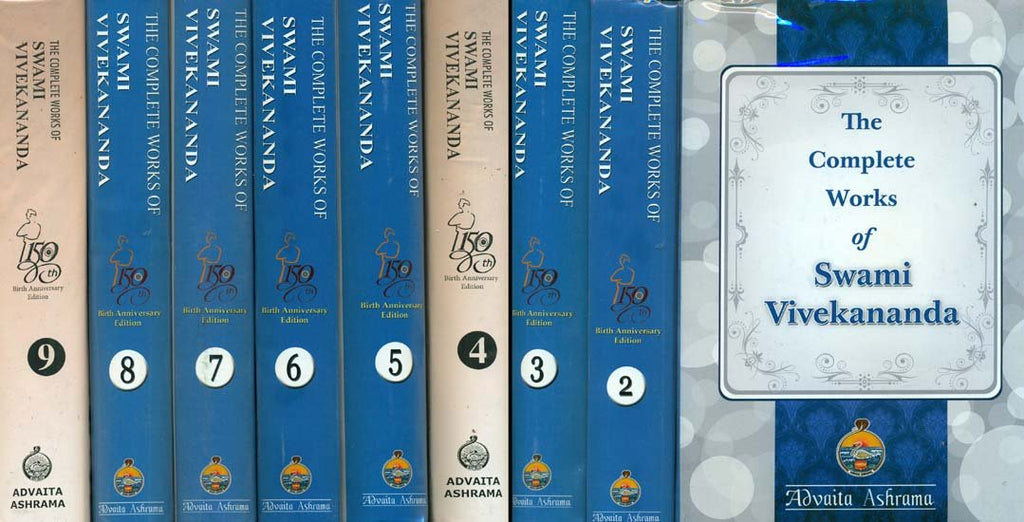








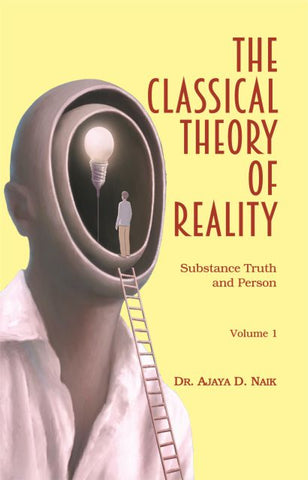
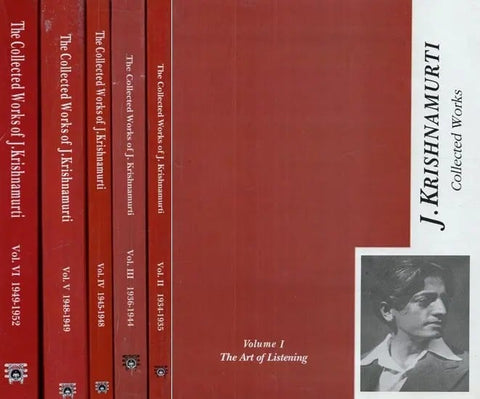

![A HISTORY OF INDIAN PHILOSOPHY [5 VOLUMES] by Surendranath Dasgupta](http://www.motilalbanarsidass.com/cdn/shop/products/HISTORYOFINDIANPHILOSOPHY_large.jpg?v=1675238163)
